Udovicic, U.S. Men’s Water Polo Coach, Talks Roster Options, Rule Changes at FINA Men’s Water Polo World Cup
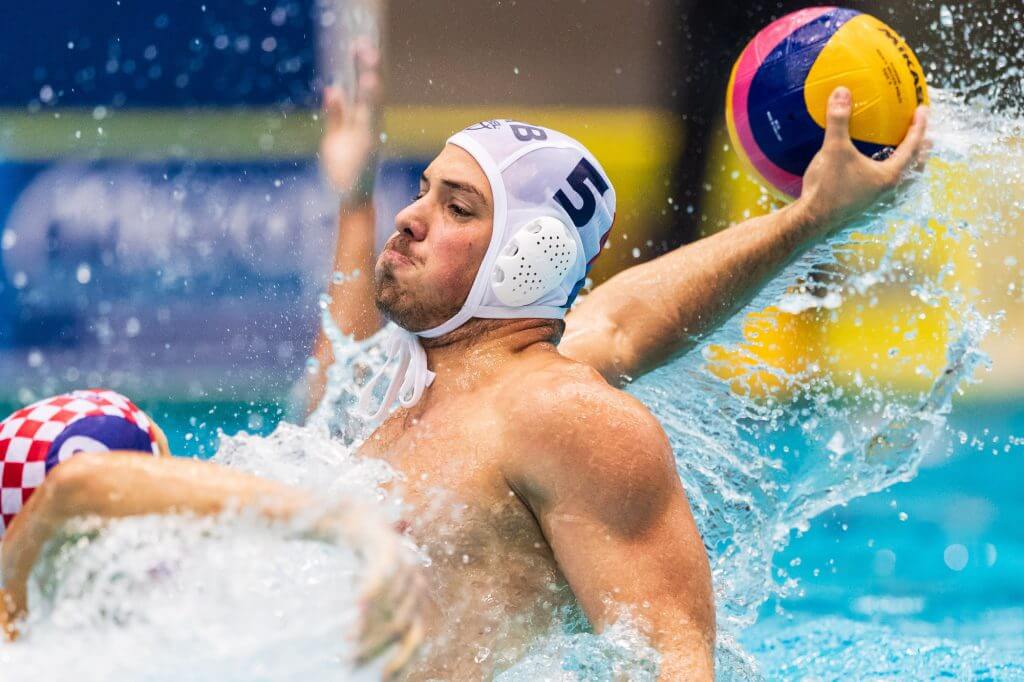
By Michael Randazzo, Swimming World Contributor
BERLIN, Germany. Bringing a young, inexperienced team to a tournament configured to test a variety of new rules for future application turned out to not be ideal for the U.S. Senior Men’s National team. Registering two wins in six days of action at the FINA Men’s Water Polo World Cup 2018, Team USA finished sixth out of eight teams but, more significantly, did not qualify for the 2019 FINA World Water Championships which, besides the Olympics, is the sport’s most prestigious competition.
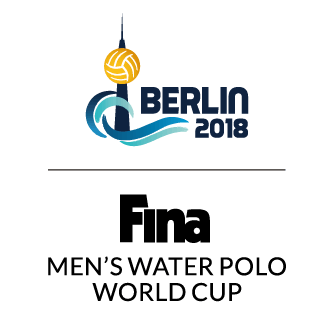
Immediately following a telling 14-8 loss to Serbia in Day Two, where the current Olympic champions blitzed goalie McQuin Baron from the outside in running up a 6-3 first quarter lead, U.S. Head Coach Dejan Udovicic spoke with Swimming World on pool deck of the Europasportpark. Addressing concerns about his team’s current fitness midway through quadrennial preparation for the 2020 Olympic Games in Tokyo—which the U.S. will hope to qualify for at the Pan American Games, July 28 – August 10 in Lima, Peru—Udovicic spoke frankly about the challenges his team faces.
Comments in <brackets> provide additional insights into the American coach’s answers.
– What’s the other option for the U.S. if you don’t qualify for 2019 Worlds here in Berlin?
UANA Cup qualification [Tentatively scheduled for January 2019. Location TBD]. We would like to qualify from here but we will see. Right now, it’s not look like that.
<This is a challenging situation for the U.S. Fielding a young team—if Jesse Smith doesn’t play, Udovicic’s qualification roster will be very light on Olympic experience—means that any international competition is essential. The FINA World Championships are second only to the Olympic Games in international competition, and therefore it’s vital that Team USA participate.>
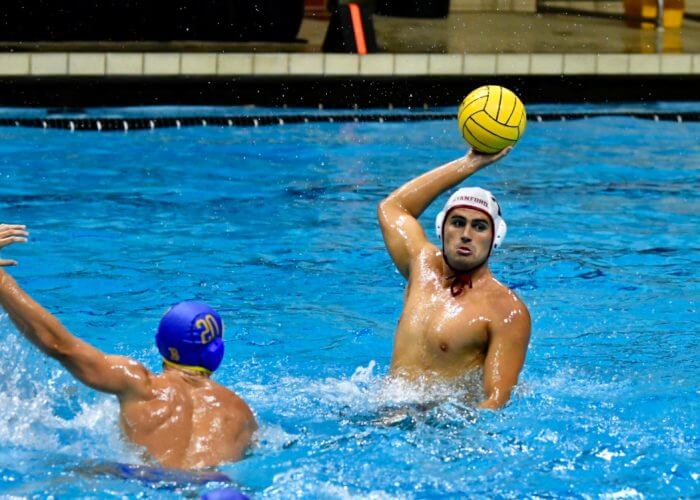
Ben Hallock. Photo Courtesy: Bryan Williams
– To focus on the positives, you’ve got four college kids here; this is something that has not typically happened during the NCAA men’s varsity season. For them, this is the thrill of a lifetime.
First, I need to thank John Vargas [Stanford men’s coach] for letting them play. [Ben Hallock and Dylan Woodhead] came one day after the team. It’s huge [for them]. Dylan was [training] with us for the last two and a half years, so I thought this was a good location to test him if we were going to seriously consider him as an option for 2020. If you’re looking at the quads calendar it seems that we’ve got time, but we’ve got plenty to do.
But if you’re looking seriously, we don’t have time. We don’t have so many quality international tournaments where you can test some of them. This is one of the occasions.
I believe in Dylan, he is a talented guy, he needs to work for sure, but his approach, work ethic, right now is showing us that we need to invest in him.
<This is the most interesting side issue for the U.S. Four college players took time out of their current seasons to fly to Europe and represent their country, which is highly unusual. BTW, notice that Udovicic says: “We don’t have time.”>
– You’ve got to like what Ben Stevenson, a hard worker, is doing to make this team.
What I said for Dylan it’s the same thing for Ben Stevenson. He’s a little bit older but he’s also unexperienced and also hasn’t played on this level. he’s tried to be with us as much as he could in the last year. He went to university games two years ago. We’re trying to keep the players in the water as much as we can, even in those circumstances.
What’s good for us is this is the last stage that we can have [younger players] more with us, while others will finish what they’re doing in school, at least it will be in December.
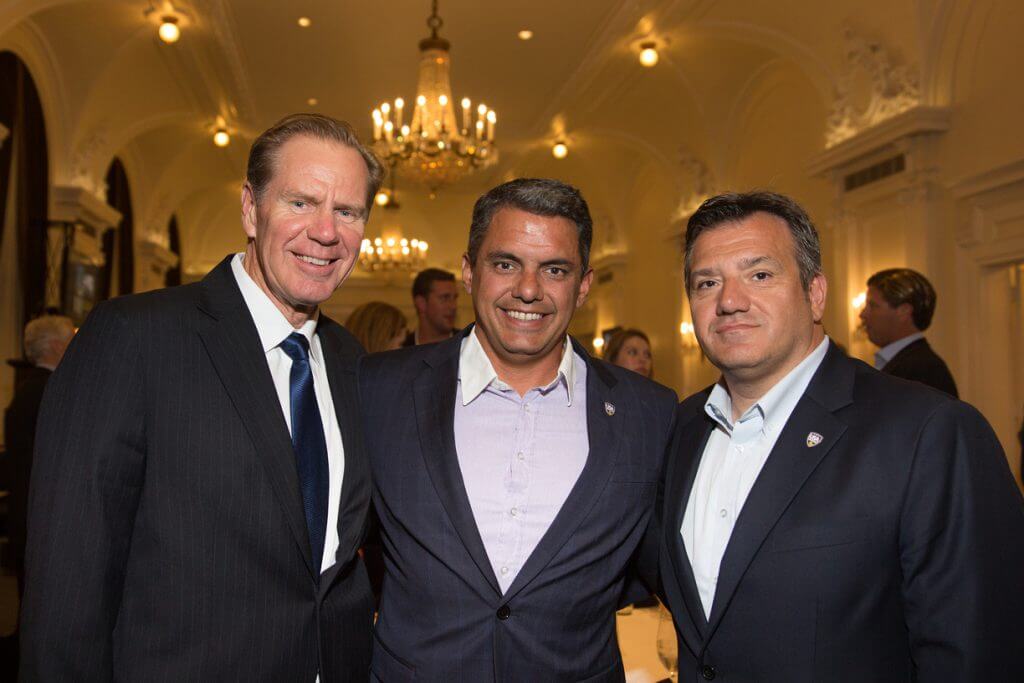
Olympic coaches: Terry Schroeder, Alex Rodriguez, Dejan Udovicic. Photo Courtesy: Catharyn Hayne
Right now, it’s where we are. But I’m sure—as we discussed at the Cutino Awards—we have so much talent, we need to work together. And now this phase is coming for us. And I have no doubt that we’re going to reach a level that is important to face every team in the world.
Are we going to win or not? It depends upon the situation in every game. But we’re capable to play with them and we are well prepared, so I don’t have doubts whatsoever.
<Stevenson had a good tournament; he’s likely a marginal Olympic prospect but he and Nik Carniglia have been in the national team mix for some time and—now that both have graduated and are available to practice—may see a lot of practice / playing time with Team USA over the next nine months.>
– What is the situation with McQuin Baron?
He’s not done with school; he’s done with playing at USC. He’s staying in school until May. Luca Cupido will finish in December; Alex Roelse probably in March.
[Baron] took time off before the Rio Olympics. And he didn’t take so many classes because at SC they are pushing him to play more.
<There’s so much to this. Baron being unavailable to play professionally in Europe is a blow to his development; as the Serbian match—among others—showed, he needs to adjust to the speed of professional shooters. Same with Roelse, who also need the pro experience. Cupido’s situation was a revelation; his immediate availability to Pro Recco is limited due to school / national team commitments>

McQuin Baron stands tall in U.S. cage; this week he switches back to student life at USC. Photo Courtesy: FINA
– So he won’t be able to play professionally before the Olympics? That would be unfortunate because playing in Europe would make a big difference.
This is a transition year—let’s say like the year after 2011 or 2010. And those are all Group A players. We got pretty much all of those player play abroad. Either they’re coming from our “A” Group or our “B” Group. But we would have 7, 8 or 9 players who are in these 18 – 19 ages who played with us last year.
Bowen is staying. Duncan Lynde is going, Ben Stevenson is going, Carniglia is going. Drew Holland is going also. It’s a start.
You see right now this Serbian team for example. They’re young, but they already played three – four years abroad. They’re aware of those superstars but those kids can play. It’s not [Filip] Filipovic and [Dusan] Mandic—he was born in ’94. Last five years he’s playing for Recco. I put him in the team for the 2012 Olympics. He played already two Olympics.
Our fortress looks not so nice, but we knew because of all these circumstances. We’re trying to do our best to at least quality prepare for Friday [cross-over quarterfinals] that we can try to do as much as we can.
We know that we don’t have enough that can work well in all those games but at least we’re going to do all we can on our side; it doesn’t matter who’s on the other side.
<This gives an idea of who from the U.S. will get professional experience—and get better. BTW, Max Irving will have a chance to up his game if he returns to Italy for Champions League play. And—in case the U.S. is in the market for a lefty—Nikola Vavic will play for Sporting Club Quinto in Genoa>
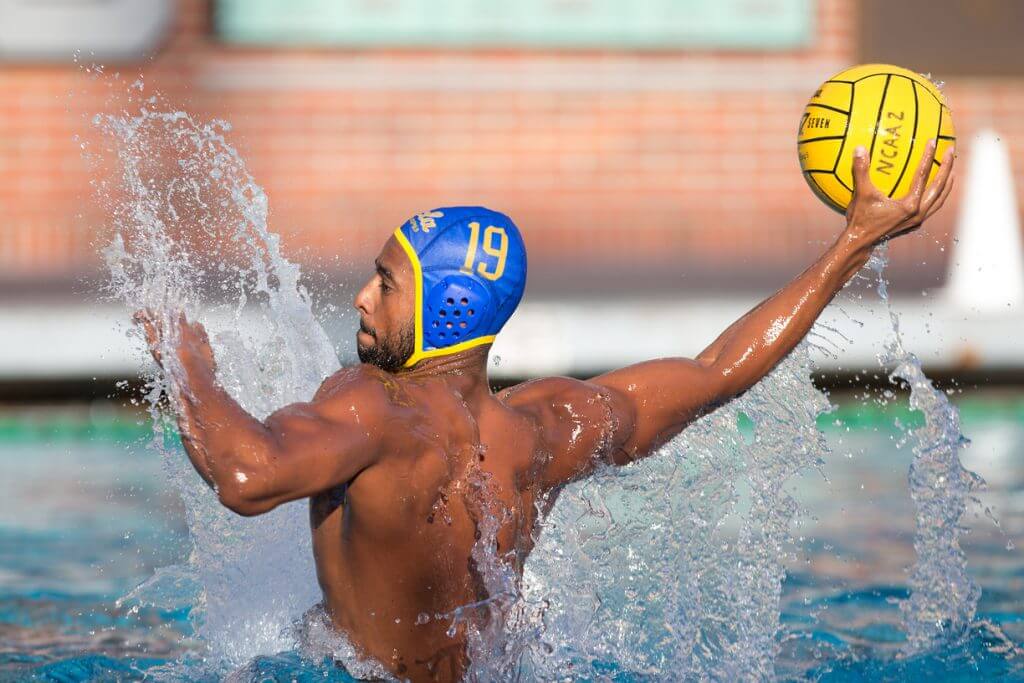
Max Irving playing for UCLA in 2017. Photo Courtesy: Catharine Hayne Photography
– The rules and the changes; how is this process working?
If you ask everyone from FINA officials, they will tell you everything’s clear and written in the rule book. And I agree. But the catch is, how they see, how we see—during our game today. Dejan Savic [Serbia Head Coach] and me complain about the same situation; for them they call differently and we don’t know why.
Speaking generally, I think that cutting the two players from the roster and asking the rest of the players to do what they’re trying to ask of them is not human. It was 19, 16 exclusions yesterday [Germany vs. Hungary] they already saved so much exclusions tomorrow it will be 25 against 23. They will finish the game with four [players].
I like that they changed the speed and the pace is better. With 11 players, the influence of the coaches is very little. They give us one more timeout [because] they realize we need more. Right now if you don’t put the second goalie in as a sub on the roster and the goalie is not good that day, we cannot sub him.
What they’re trying to do is generally good but I think it must be more precise, fairer… it’s not proper to play with 11 players; okay, let’s play 11 in 25 meters.
And I’m not against this. This possession for 20 seconds is a good thing, they change all the path on the man-up position to speed up, it’s giving the defense less time to organize if you tied the cage normally.
I think nobody knows exactly what to do right now to make good steps in our favor. We’re supposed to learn from each other right now, from each game, what we should do next.
Honestly, this is the first one because the juniors youth competition you cannot compare with [senior men].
I am in favor of this but I think if you’re talking about us, putting the foul from five to six meters—it hurts a lot. That line hurts us a lot as Americans because we’ve got bad shots from five meters now, and nobody calling this, it’s too much.
Statistically we give up three – four goals from an [ordinary foul] shot each. Today we got two shots from five meters and yesterday we got one. Statistically when it was five meters, we take between eight and twelve shots.
<There’s SO MUCH more to this story; starting tomorrow Swimming World will present what Andrey Kryukov, Bureau Liaison for FINA’s Technical Water Polo Committee has to say about the rationale behind and next steps for rule changes.>
– And the Serbians are more adept at this…
But it’s one player; it’s Mandic. And Mandic is Mandic. It would be a problem for Filipovic at this level. In trying to achieve this level, probably some of players will grow up and get more experience, a bigger body, get stronger. Right now, this is where we are.
<The key take away is that professional shooters like Mandic are already up to speed with the new 6M line for shooting after an ordinary foul. And the Americans aren’t.>




.png)